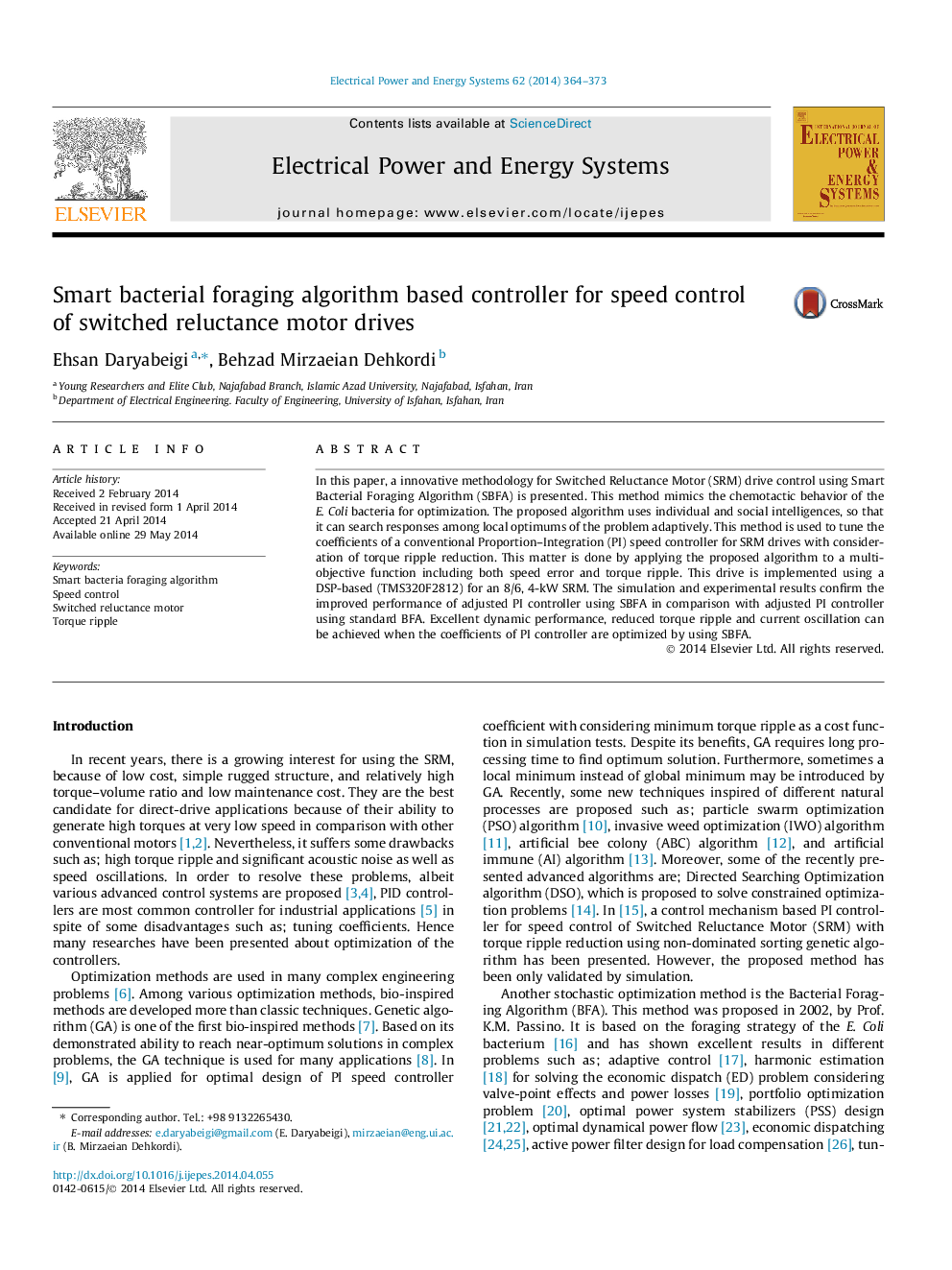| Article ID | Journal | Published Year | Pages | File Type |
|---|---|---|---|---|
| 398347 | International Journal of Electrical Power & Energy Systems | 2014 | 10 Pages |
•A smart optimization method was developed to design a PI controller in SRM drives.•Tuning PI was done by a formulation based speed tracking and torque ripple.•The proposed algorithm enjoys both individual and swarming intelligences.•The statistical results approve superiority of the SBFA over the previous algorithm.•The practical results show excellent control performances for a SRM drive.
In this paper, a innovative methodology for Switched Reluctance Motor (SRM) drive control using Smart Bacterial Foraging Algorithm (SBFA) is presented. This method mimics the chemotactic behavior of the E. Coli bacteria for optimization. The proposed algorithm uses individual and social intelligences, so that it can search responses among local optimums of the problem adaptively. This method is used to tune the coefficients of a conventional Proportion–Integration (PI) speed controller for SRM drives with consideration of torque ripple reduction. This matter is done by applying the proposed algorithm to a multi-objective function including both speed error and torque ripple. This drive is implemented using a DSP-based (TMS320F2812) for an 8/6, 4-kW SRM. The simulation and experimental results confirm the improved performance of adjusted PI controller using SBFA in comparison with adjusted PI controller using standard BFA. Excellent dynamic performance, reduced torque ripple and current oscillation can be achieved when the coefficients of PI controller are optimized by using SBFA.
